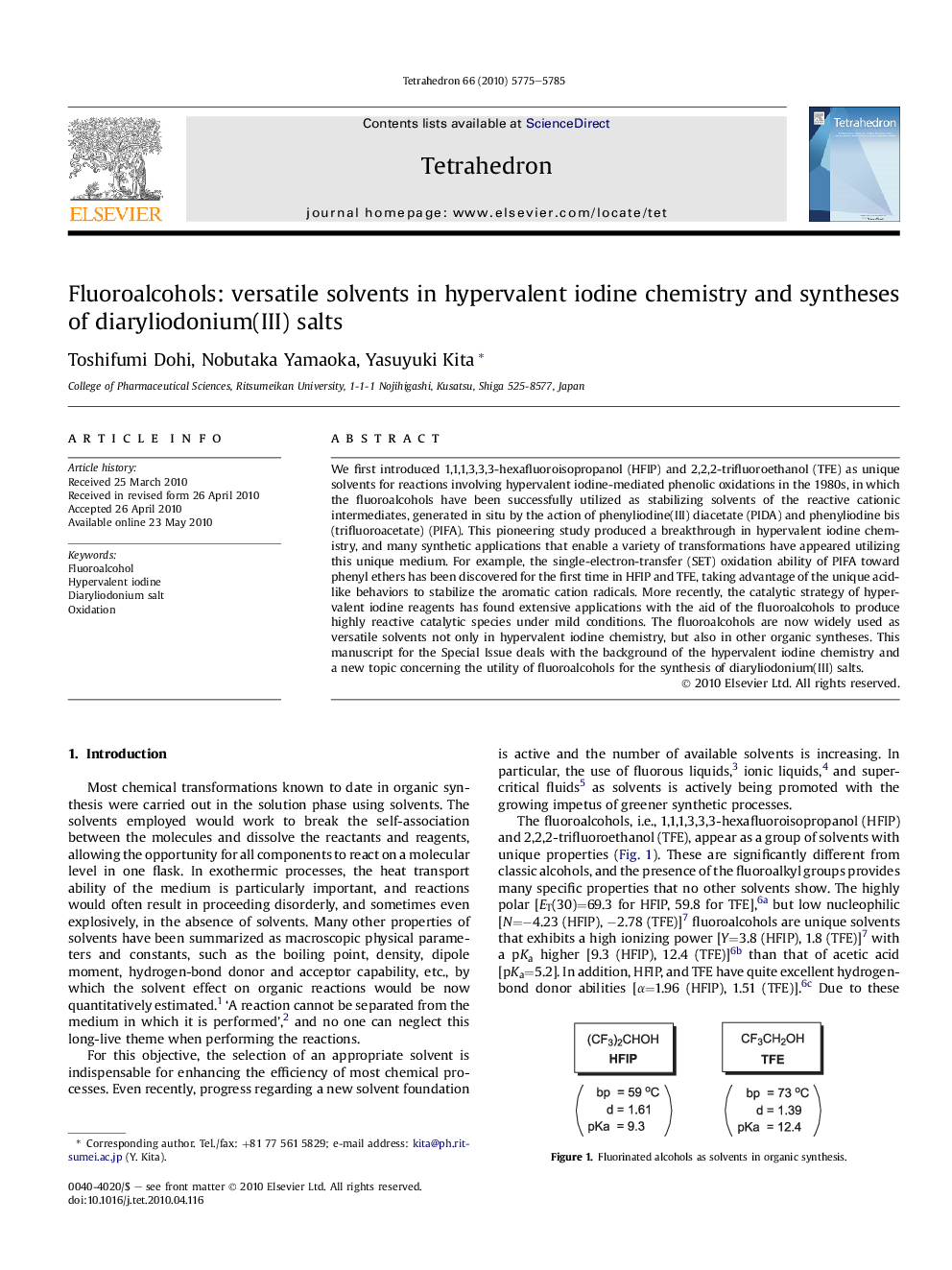| Article ID | Journal | Published Year | Pages | File Type |
|---|---|---|---|---|
| 5223052 | Tetrahedron | 2010 | 11 Pages |
We first introduced 1,1,1,3,3,3-hexafluoroisopropanol (HFIP) and 2,2,2-trifluoroethanol (TFE) as unique solvents for reactions involving hypervalent iodine-mediated phenolic oxidations in the 1980s, in which the fluoroalcohols have been successfully utilized as stabilizing solvents of the reactive cationic intermediates, generated in situ by the action of phenyliodine(III) diacetate (PIDA) and phenyliodine bis(trifluoroacetate) (PIFA). This pioneering study produced a breakthrough in hypervalent iodine chemistry, and many synthetic applications that enable a variety of transformations have appeared utilizing this unique medium. For example, the single-electron-transfer (SET) oxidation ability of PIFA toward phenyl ethers has been discovered for the first time in HFIP and TFE, taking advantage of the unique acid-like behaviors to stabilize the aromatic cation radicals. More recently, the catalytic strategy of hypervalent iodine reagents has found extensive applications with the aid of the fluoroalcohols to produce highly reactive catalytic species under mild conditions. The fluoroalcohols are now widely used as versatile solvents not only in hypervalent iodine chemistry, but also in other organic syntheses. This manuscript for the Special Issue deals with the background of the hypervalent iodine chemistry and a new topic concerning the utility of fluoroalcohols for the synthesis of diaryliodonium(III) salts.
Graphical abstractDownload full-size image
